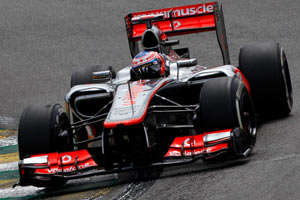Beelsebob, the important word (which I should perhaps have put in bold) is
significant : we would be looking at thrust being produced which is proportional to the expansion ratio and total mass of air that is expanding.
How much air will be drawn through the radiator and how much will it expand? I don't know the maths, but I floated the idea past a contact at British Aerospace last night and they found it more than slightly amusing.
The temperatures required to produce
significant thrust from air expansion alone are simply ludicrous, and are such that they could never be reached in a formula one car.
I think that the best example of a heat-induced jet engine (which operates without introducing additional expansion material into the air stream) is the little-known and ill-fated nuclear ramjet :
http://en.wikipedia.org/wiki/Project_Pluto
This type of propulsion is still being experimented with on a smaller scale (for use in unmanned drones) but I doubt similar effects can be achieved using waste heat from a simple combustion engine.



